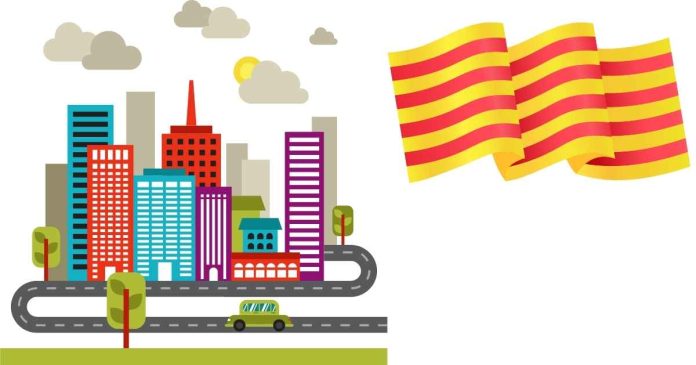Pamplona is the capital city of the autonomous community of Navarre, one of Spain’s 17 autonomous regions. It serves as the political, economic, and cultural center of the province.
- Location: Pamplona is located in the northern part of Spain, close to the French border. It lies at the confluence of the Arga and Aragon rivers, nestled in the foothills of the Pyrenees Mountains.
- Population: Pamplona has a population of approximately 200,000 people, making it one of the medium-sized cities in Spain. The city is part of a larger metropolitan area, which brings its total population to around 350,000.
Historical Significance:
- Historical Roots: Pamplona has a rich history that dates back over 2,000 years. It was originally a Roman settlement known as Pompaelo, founded around 75 BCE. The city’s name comes from this Roman origin.
- Medieval Architecture: Pamplona is known for its medieval walls, castles, and churches. Some key landmarks include:
- Pamplona Cathedral: A stunning Gothic cathedral that dates back to the 14th century.
- Citadel of Pamplona: A large Renaissance-style fortress built in the 16th century.
- Plaza del Castillo: A central square that has been the heart of the city for centuries.
Famous Festival – San Fermín:
- Running of the Bulls (Encierro): Pamplona is globally famous for the San Fermín festival (the Running of the Bulls), which takes place every year from July 6 to 14. During this event, bulls are released into the streets of Pamplona, and participants run in front of the bulls from the starting point at the Cuesta de Santo Domingo to the bullring. The festival is both thrilling and controversial due to the risks involved.
- Religious Origins: The festival honors Saint Fermín, the patron saint of Navarre. The event’s origins are believed to be rooted in religious processions, with the bull runs added later.
Cultural and Economic Hub:
- Cultural Events: Aside from San Fermín, Pamplona hosts other cultural events such as classical music festivals, theater performances, and local fiestas throughout the year.
- Education: The city is home to the University of Navarra, one of Spain’s leading private universities, attracting both Spanish and international students. It’s also a regional educational and research hub.
- Economy: Pamplona has a diverse economy. It’s historically an industrial city, especially in the automobile industry, with companies like Volkswagen having a significant presence. The city also has a growing service sector, with tourism playing a crucial role, especially during the San Fermín festival.
Geography and Climate:
- Surrounding Nature: Pamplona is located in a valley, surrounded by hills and mountains, including the Pyrenees to the north. The natural landscape provides opportunities for hiking, cycling, and other outdoor activities, especially in the warmer months.
- Climate: Pamplona has a Mediterranean climate with continental influences. Summers can be hot, with temperatures often reaching around 30°C (86°F), while winters are cooler, with average temperatures in December and January hovering just above freezing. The region gets moderate rainfall throughout the year.
Culinary Scene:
- Local Cuisine: Pamplona’s cuisine is a blend of traditional Navarrese flavors, with influences from both Basque and Mediterranean cooking. Local dishes include:
- Tortilla de chistorra: A variation of the Spanish omelette made with chistorra (a type of sausage).
- Estofado de toro: Bull stew, typically served during San Fermín celebrations.
- Piquillos: A type of pepper, often stuffed or served in sauces.
- Cider: Like much of northern Spain, Pamplona has a strong tradition of sidra (cider), particularly from the nearby Basque region.
Pamplona and the Camino de Santiago:
- Pamplona is an important stop along the Camino Francés route of the Camino de Santiago (Way of St. James), a medieval pilgrimage route that leads to the Cathedral of Santiago de Compostela in Galicia. Pilgrims pass through Pamplona on their journey, adding an element of historical and religious significance to the city.
Navarre Province:
- Autonomous Community: Navarre is one of the 17 autonomous communities of Spain. It has its own government and distinct cultural and historical identity. While it is located in the northern part of Spain, it has a unique status due to its history of political and cultural independence.
- Geography: The province of Navarre is diverse, with mountainous regions in the north (near the Pyrenees), fertile plains in the center, and rolling hills to the south. This geographical variety contributes to its agricultural wealth, particularly in the production of vegetables, wheat, and wine.
Conclusion:
Pamplona is a city steeped in history, culture, and tradition, from its medieval architecture to its globally recognized festival of San Fermín. It serves as the capital of the province of Navarre, a region with a rich heritage, unique cuisine, and a prominent place on the Camino de Santiago pilgrimage route. Whether you’re exploring its historic streets or attending the thrilling Running of the Bulls, Pamplona offers a blend of old-world charm and modern vibrancy.


